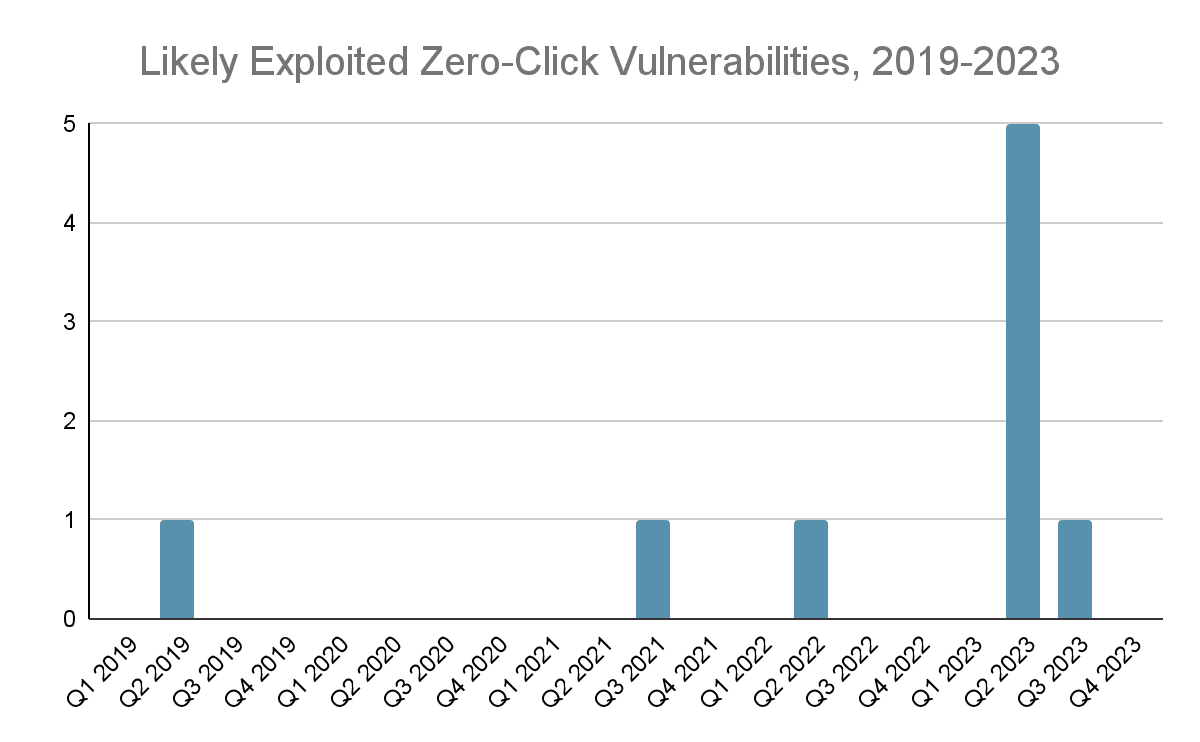
Reports of zero-click vulnerability exploitation began to proliferate at an alarming rate in 2023 compared to the previous four years
According to a detailed report by Recorded Future’s Insikt Group, the cybersecurity landscape faces a formidable threat in the form of “Mobile NotPetya,” a potential zero-click, wormable mobile malware that could spread autonomously and wreak havoc on a global scale.
A Rising Tide of Zero-Click Exploits

The alarming increase in the development of zero-click exploits, which allow malware to be installed on a device without any interaction from the user, is central to the concerns expressed in the report. In 2023 alone, more zero-click vulnerabilities were disclosed than in the previous four years combined. These vulnerabilities are particularly insidious because they can be leveraged to deliver spyware seamlessly and unnoticed, bypassing traditional cybersecurity defenses.
The Potential Impact of Mobile NotPetya
The theoretical “Mobile NotPetya” mirrors the destructiveness of its namesake, which caused extensive damage to global systems in 2017. However, the mobile version could potentially infect hundreds of thousands of devices within days of its release, utilizing sophisticated zero-click exploits combined with the ability to hijack contact lists for rapid dissemination. This method of spread, likened to epidemiological models of disease transmission, highlights the extreme risk and high potential for widespread impact.
Insufficient Defenses Against Advanced Threats
Current mobile device defenses, such as iOS’s Lockdown Mode and Samsung’s Message Guard, offer some level of protection by limiting the functionality exploited by zero-click attacks. However, these measures are not foolproof and often require users to opt into restrictive settings that limit usability, which may be unappealing to many. This underscores a significant challenge in cybersecurity: balancing robust security measures with user convenience and functionality.
Potential Scenarios and Actors
The report speculates on various scenarios for the deployment of such malware, including as a tool by nation-states in geopolitical conflicts or by cybercriminal groups looking to exploit these capabilities for financial gain. The potential for accidental releases by criminals unfamiliar with the power of the tools at their disposal is also a chilling possibility, which could lead to widespread unintentional damage.
Urgent Need for Proactive Measures
To combat the threat of a mobile NotPetya, telecommunications providers and mobile manufacturers may need to implement drastic and potentially disruptive measures. This could include emergency protocols to shut down message transmission in affected areas or more advanced analytical techniques to detect and prevent the spread of malware at a network level.
Conclusion
The threat of a mobile NotPetya is a stark reminder of the evolving nature of cyber threats and the continuous need for advancements in cybersecurity defenses. As mobile devices become increasingly integrated into personal and professional realms, the potential damage from such attacks grows. The cybersecurity community, device manufacturers, and users must remain vigilant and proactive to prevent the realization of these threats and protect against the next generation of cyberattacks.